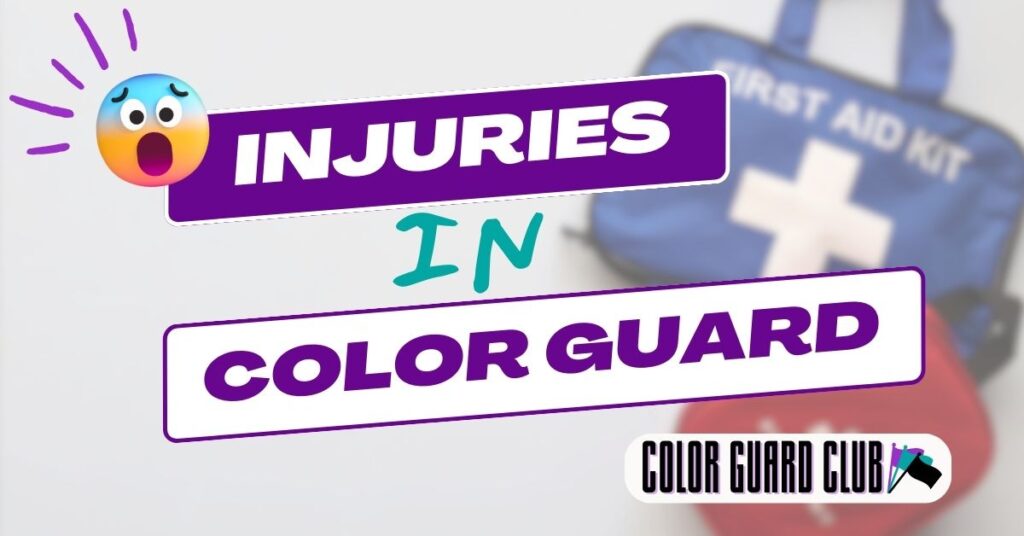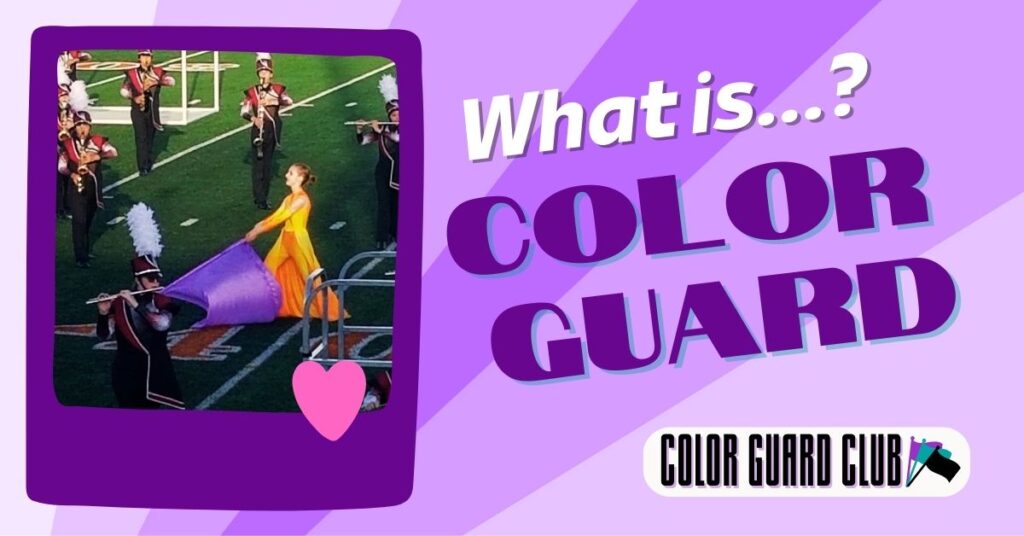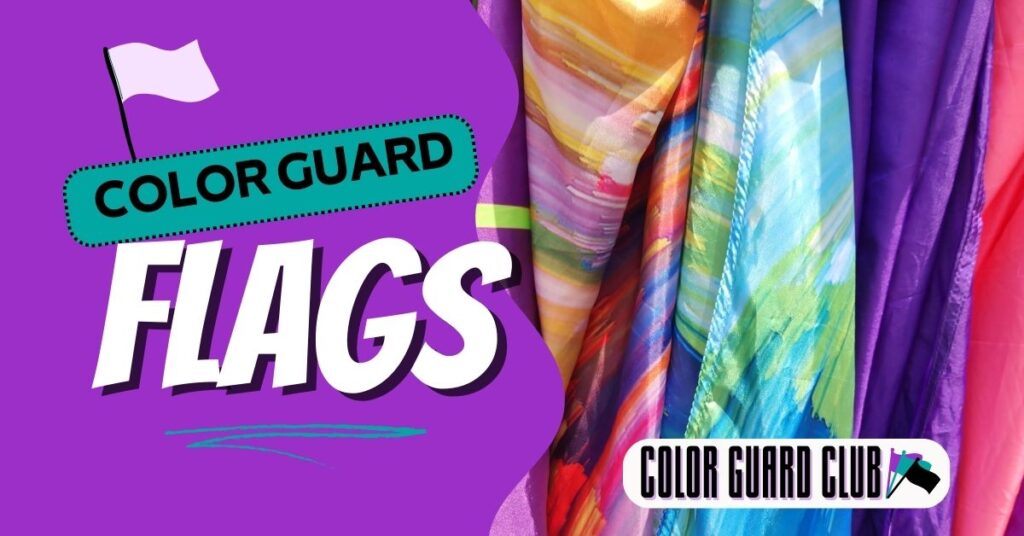While injuries aren’t something to overly worry about in color guard, they do happen.
Major injuries are a lot less common than the little things, of course, but with proper training so much is avoidable.
Be aware that this article is based on my experience, so things might be different for you or your teammates.
I wanted to write a post about injuries because it was a big fear of mine coming into guard. I was hesitant to try new things which setback my improvement from the start.
It took a while for me to learn that guard is just like any other physical activity and injuries can happen. Prioritizing your safety and having confidence will keep any injuries to a minimum.
Here are some injuries that I’ve received in guard, or that I’ve seen others get:
Scratches / Cuts
Getting a little scratch or cut is one of the more common injuries in color guard.
This can happen if your equipment moves in the wrong plane and hits you or brushes up against you. I’ve only experienced this with sabre. The blade and hilt on the sabre are skinny and heavy. If my hands missed when I went to catch, and the sabre hit me, it would definitely scratch. I was able to protect my arms and hands a bit better by wearing sleeves and gloves.
Bruises
Along with scratches or cuts, bruises are pretty common. You will definitely get a bruise at some point. I can say though, it’s probably the least scary of the list.
From doing groundwork dance choreography to practicing any equipment, bruises like to randomly pop up. When rolling on the floor it’s easy to bruise your knees, so I helped this by wearing knee pads at rehearsal. Sometimes you’ll pull a little goof and you’ll hit yourself, but hopefully it’ll only end up a typical bruise.
Jammed Fingers / Toes and Sprains
The most severe injury I’ve ever received in my few years of guard has been a sprained thumb.
The night before a marching band competition, I went in my backyard to practice some rifle tosses. I attempted to catch a toss and the rifle came straight down on my thumb. Thankfully, adrenaline got me through the performance the next day. This definitely was a bit scary, because my hand swelled and I had a large purple bruise.
If this happens to you, make sure you use ice and take a break from spinning if necessary. Getting jammed or sprained may seem like a pretty temporary thing, but that’s only if you give it time to let it heal.
Fractures
I’ve only heard a couple stories about color guard members breaking a bone. They were about really experienced people trying some new, crazy trick. I don’t think fractures are very common at all, but again, this is a very physically demanding activity.
You won’t have to worry about this when first starting out, but keep a level of caution as you work to increase your skill set.
Concussions
I’ve never received a concussion, but I have a few teammates that have.
They got them from trying a new toss, usually a type 45 or parallel. Like I’ve said before, as long as you watch your technique and stay focused when practicing, you shouldn’t worry.
With both a concussion and a fracture, it’s absolutely necessary to get medical attention and take the appropriate time away from guard.
To avoid any concussions or even bruises to the head, some of my friends will wear a helmet when practicing new tosses. There is nothing wrong with being safe!
Injuries are usually very minor in color guard and they aren’t something to worry about. If you’re concerned, talk to your teammates or coaches about how to prevent them.
Do you have any tips on how to avoid injuries in guard? Share in the comments below!



